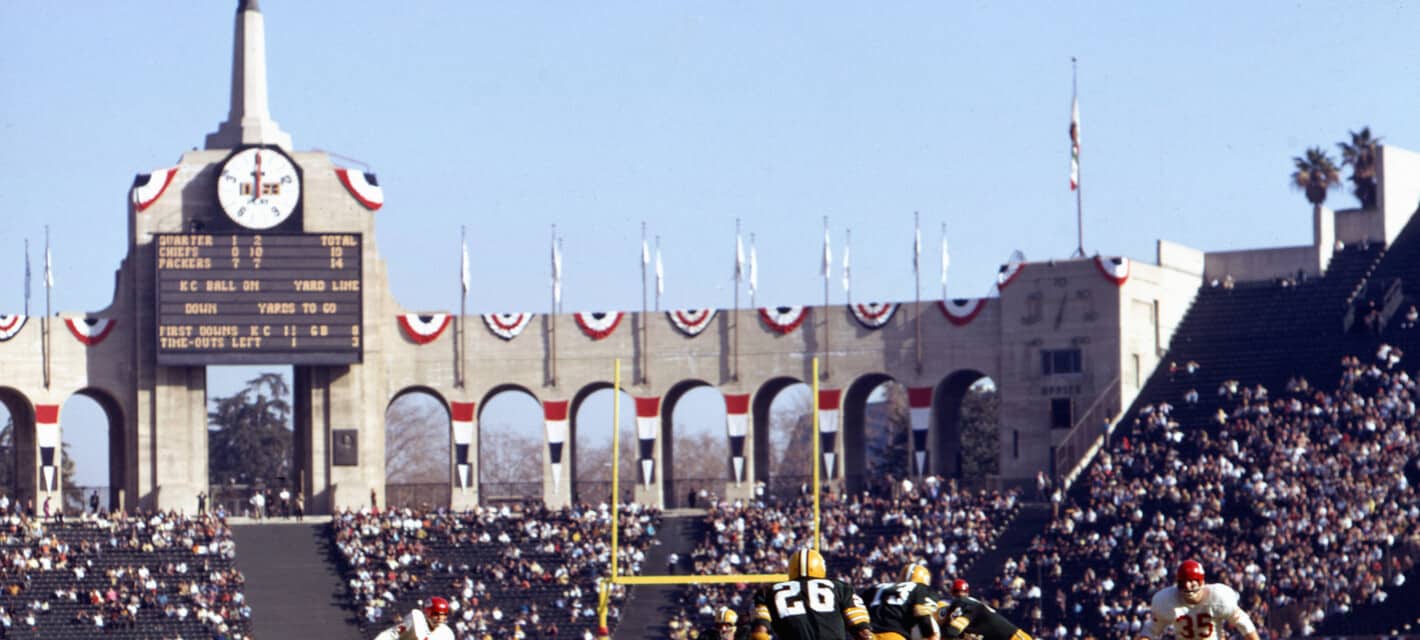It could have been called the “Merger Bowl”. The owners of the American and National Football League teams considered that term for their proposed championship game while discussing the merger of the leagues in 1965. Another option was to call it simply “The Game”, a term usurped from the Harvard-Yale football rivalry, one of college football’s oldest. Lamar Hunt, owner of the AFL’s Kansas City Chiefs, suggested the name “Super Bowl“, somewhat sheepishly telling NFL commissioner Pete Rozelle that the name “obviously can be improved upon” in a letter written in 1966. The first two games weren’t called the Super Bowl, not officially, though the name stuck.

For the first Super Bowl, two American television networks, CBS and NBC, agreed to simulcast the event, putting the game on two of the three major networks which existed in America at the time. The following year the networks began alternating broadcasts. From the beginning, the networks hyped the event for days, then weeks, then months before its broadcast, making it the showpiece event of their season’s schedule when they held the broadcast rights. The Super Bowl evolved into Super Sunday, then Super Week, then two weeks. It has become a de facto American National Holiday, on which more food is consumed than any other day of the calendar besides Thanksgiving Day. Here is some of the history of the NFL Championship Game, the NFL’s cherished the Super Bowl.
1. The concept of “Bowl” games was taken from college football

Until the late 1950s, college football in the United States proved more popular than the professional version. The nation viewed games such as Notre-Dame v. USC or Alabama v. Auburn with more excitement than any NFL game. The college season came to an end during the holidays, when the top-rated teams engaged each other, usually through invitation to one of the major post-season games. They were called bowl games, taking the name from the first of them, the Rose Bowl in Pasadena, California, part of the Tournament of Roses festival held there. By the early 1960s, the major bowl games included the Orange Bowl in Miami, the Sugar Bowl in New Orleans, the Cotton Bowl in Dallas, and the Sun Bowl in El Paso.
In the early 1960s, the upstart American Football League successfully challenged the NFL, attracting college players of considerable talent to their teams and creating a bidding war. NFL owners chafed at the increased cost of obtaining players. After years of financial pressure, the leagues agreed to merge, creating a unified league split into two conferences, the American and National Football Conferences. The AFC contained all of the existing AFL franchises, plus three existing National teams (Cleveland, Baltimore, and Pittsburgh). The league scheduled a championship game between the conferences, the first in January 1967 (while still operating as separate leagues) to crown a champion for the 1966 season. Few gave any AFL teams a realistic chance of winning.

